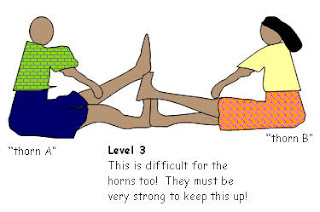What does it mean? Well Jack and Poy are obviously names. Hali-hali hoy! is like an expression calling them towards the speaker. Hali ka, means come here. Hoy! is one effective way of calling a Filipino’s attention...similar to “Hey!”
Perhaps the person is calling both Jack and Poy to come play with him. The last statement: “Sino’ng matalo, siya’ng unggoy!” is a tease that whoever will lose is the monkey...of the monkey’s the loser.

While saying this rhyme, children do rock, papers, scissors. First with the beat they put their right hand, formed into a fist, pointed towards each other, and continue to do so, along with the beat until the last one, where they spread and reveal whether they will use rock, paper or scissor as their “hand”. The loser eventually is the unggoy.

This is used as preliminary elimination for most Filipino children’s games, along with “Maalis, alis” and even without another game to play, this alone can provide hours of amusing fun for kids who can be creative and change the bits i.e. “sinong matalo kakain ng champoy” (whoever loses will eat champoy). Champoy is a Chinese sweet that is also a favorite Filipino candy.
It is noteworthy to add that the Japanese have a very similar (though more complicated, with more hand formations; click title to get to the link) hand game. In Japan, hand games are called Ken asobi. This particular game is called Jaken Pon.














